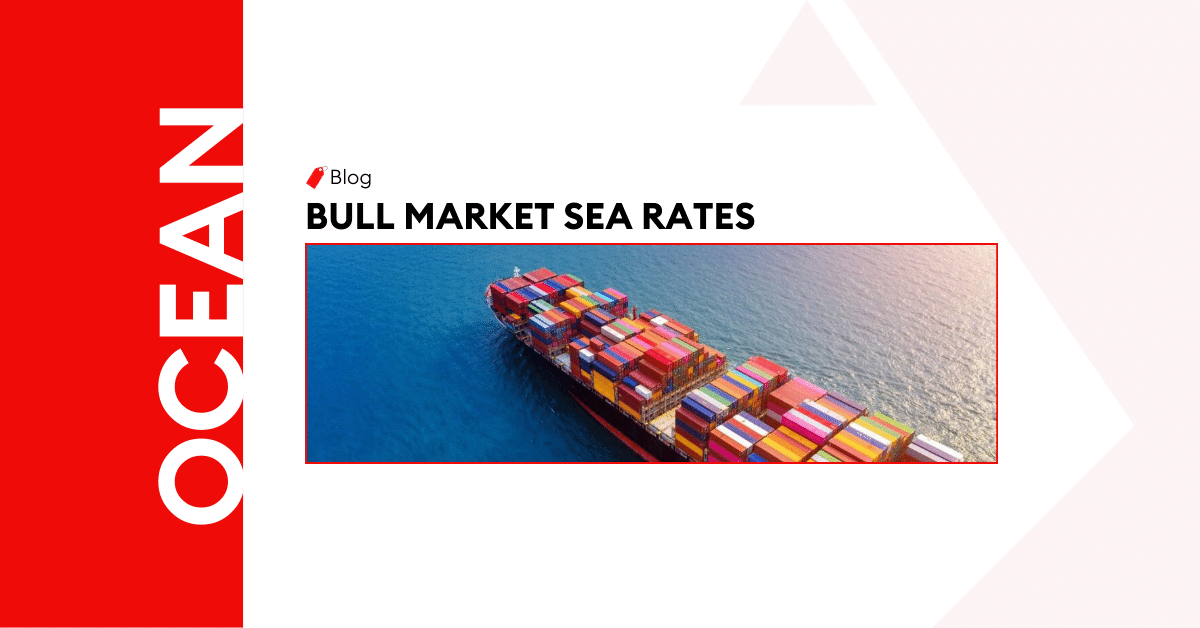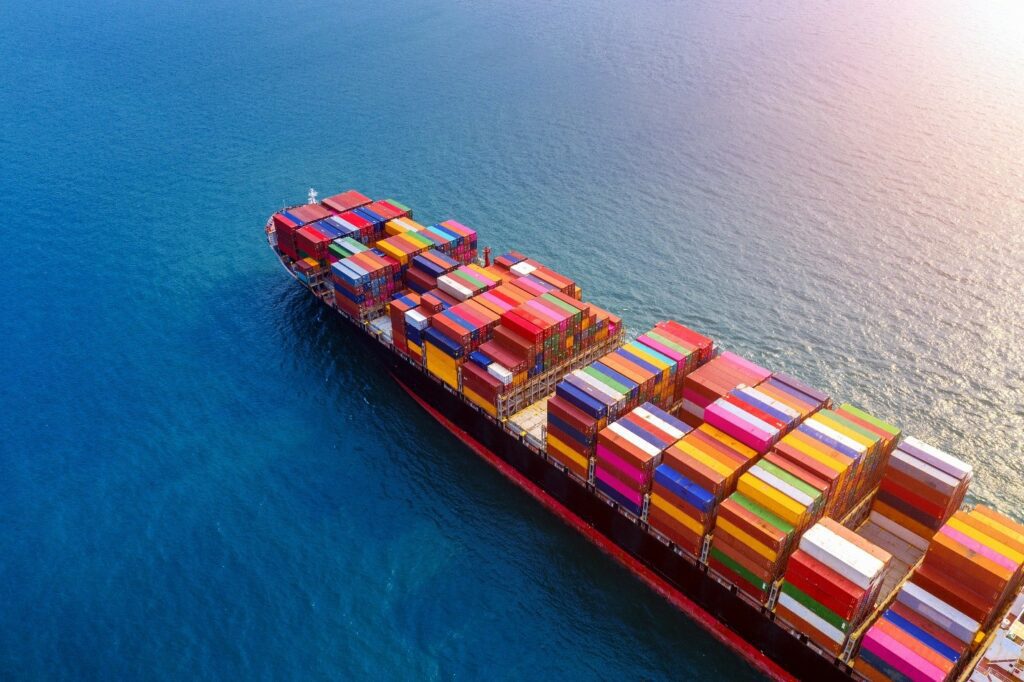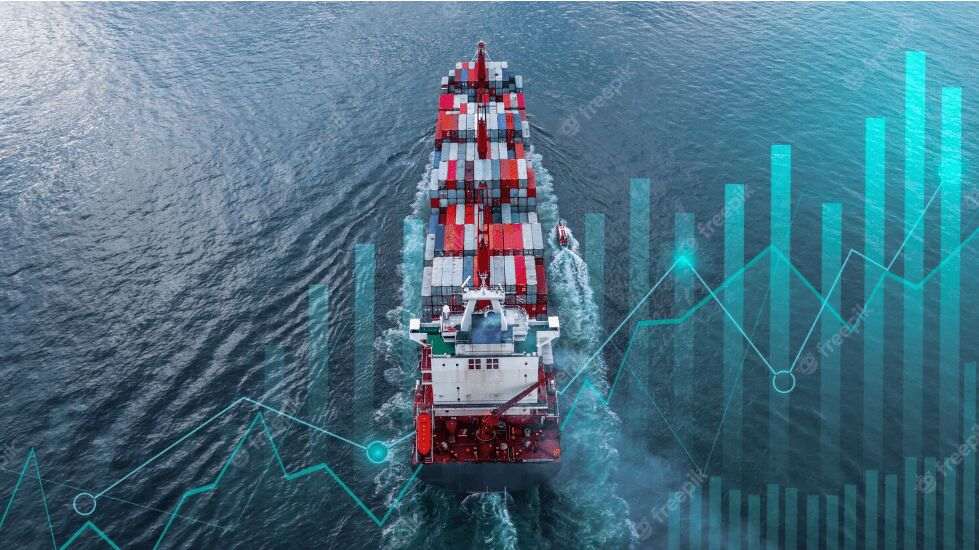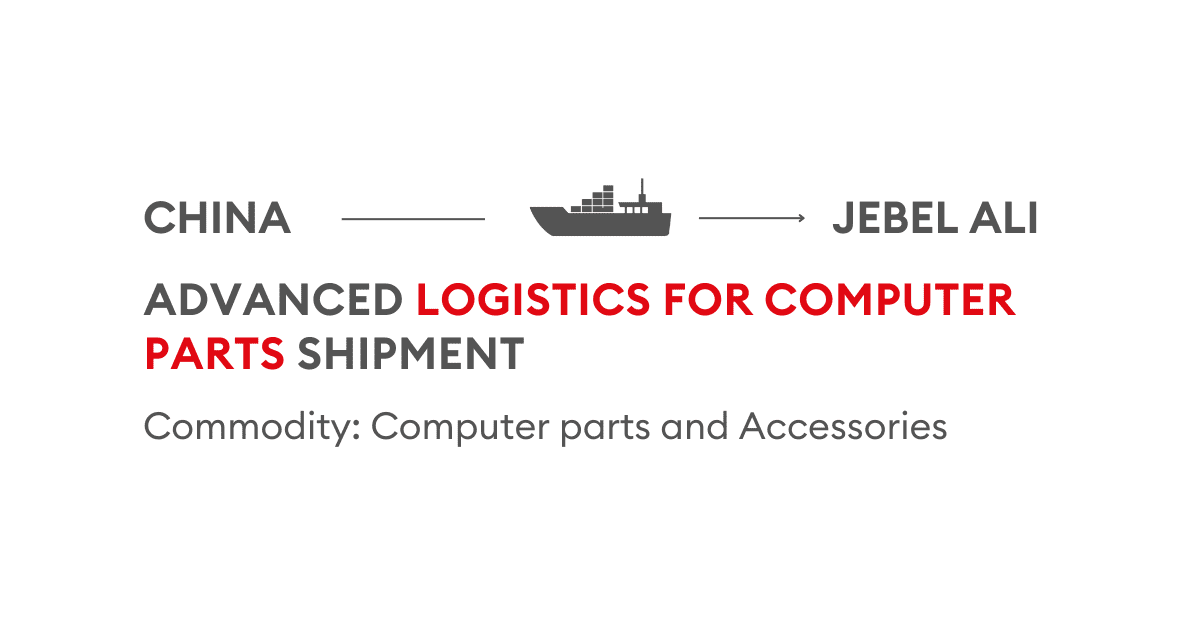
How Shippers Cope with Increasing Sea Freight Rates in a Bull Market?

A bull market is a situation where there are increased buyer activities showing an increase in demand. It is a market experiencing an uptrend for a period. The bull market causes an increase in the ocean freight rate and shows the need for businesses to come up with coping strategies to reduce the impact
Factors Driving Increasing Sea Freight Rates in a Bull Market

Sea freight rates do not rise and fall at will; they are influenced by several factors or forces that are ever-existent and are not necessarily stable. So, let’s get to know these factors.
Increased Global Demand for Goods and Shipping Services
Demand is a primary force or determiner in any market. It is a product of consumer needs, preferences, and overall activities. When there is increased demand, it directly results in high demand for shipping services because the goods need to be transported or distributed to meet consumer needs.
An overlap of high demand and shipping services will trigger more operational costs and effort for the shipping lines. There is a need to compensate for this rise in operational costs and efforts. As a result, shipping carriers and other players tend to charge more fees. A good example is what is experienced in peak seasons leading to peak season surcharges (extra cost).
Capacity Constraints and Equipment Shortages
Vessels run on fuel and their prices are not always stable. Shipping lines need to procure a sufficient quantity of fuel to mitigate the impact of price fluctuations. When fuel prices are high, it pushes up ocean freight rates. In such cases, the Bunker Adjustment Factor (BAF) is the driver of fuel surcharges to compensate for the price fluctuation.
Impact of Geopolitical Events and Trade Policies
There are trade policies that are lenient and others that are tough. An example is the tariff and duties on goods. Shipping to regions with high tariffs will increase freight costs. Geopolitical events like restrictions, port closure, and conflicts in a trade lane will also increase ocean freight rates.
Strategies to Cope with Increasing Sea Freight Rates
An increase in sea freight rates is a situation that is almost inevitable. However, you must find a way to cope to reduce the effect of the increasing rate on your business. Here are some strategies that can help you.
Negotiate Long-term Contracts and Rate Agreements
Long-term contracts and rate agreements are ideal for curbing the impact of increasing ocean freight rates. Since this agreement covers a long period, you can easily take advantage of the current rates and solid common ground in the case of a rate increase in the future.
Here are two scenarios you can employ in this agreement.
Demand Outstrip Capacity
This is a situation where there are several cargoes ready for shipment but not enough space or a shortage of vessels. Let your agreement cover this situation with the shipping carrier assuring space for your cargo. A flat fee can be agreed upon for this situation.
Demand is Lower than Capacity but still in a Bear Market
Rates tend to be lower or stable when there is enough or more than enough capacity for the current demand. The agreement should cover this situation.
Building Strong Relationships with Shipping Carriers and Freight Forwarders
A strong relationship with shipping carriers and forwarders will be of immense advantage to you. By virtue of a strong relationship, you’ll enjoy the following.
- Favorable/market competitive rates
- Ship carriers and forwarders will make your cargo a priority
- Better efficiency and flexibility
Exploring Alternative Shipping Routes and Modes
An increase in ocean freight rate may be due to restrictions or unfavorable conditions in a shipping route. In this case, you can change to an alternative route where the conditions are favorable.
If the case is a general factor with ocean freight, you can use other modes such as air freight till rates become better.
Optimizing Cargo Consolidation and Container Utilization
Consolidation can help out in times of high rates. You can merge your cargo with that of other shippers and load it onto a container. This way, you all share the cost. Consolidation can also optimize container utilization in times of shortages, hence reducing the impact of extra charges.
Implementing Effective Supply Chain Planning and Forecasting
The occurrences of ocean freight rate increase should no longer be news as it is frequent in the industry. So, there should be a workable plan in place that involves how your goods move down the supply chain. This plan will include studying the market to predict times of rate increase. You can employ the help of experts to create an effective supply chain framework and forecast for cost.
Leveraging Technology and Data Analytics to Optimize Shipping Operations

Technology is indispensable at this time when businesses seek efficient processes. With technological applications, you can take advantage of the following and minimize the impact of freight rates.
- Route optimization: It can dig into the historical information of shipping routes and this can be used to pick the most efficient option.
- Data analytics: It will help study and analyze the market conditions, demand, and supply dynamics to help predict times of possible rate increases.
All these findings will help you know the best time to ship or plan your shipment in the long run.
Freight Auditing or Freight Optimization Services
This involves verifying documents and invoices to identify overcharges and discrepancies. This can be coupled up with optimization services to make your planning efficient which in turn smoothens the freight process.
Risk Mitigation and Cost Containment Measures
Risks are sometimes inevitable but can be mitigated for sure. With well-outlined strategies, you can contain costs and mitigate risk at the same time.
Understanding and Managing Fuel Surcharges and Bunker Adjustment Factors (BAF)
Fuel surcharges are extra costs imposed by shipping carriers to compensate for the fluctuation in fuel prices. Close monitoring of fuel prices will give you a view of what the fuel surcharge will be. It can also help with noting the times when fuel prices will be high, hence influencing your shipment schedule.
Incorporating Flexible Contract Terms and Rate Adjustment Clauses
You can employ long-term contracts that come with rate adjustment clauses in the case of an increase or decrease. Detailed negotiations will do in this case with all terms and clauses clearly stated.
Analyzing and Managing Transportation Spend
A structured plan showing the cost per every stage of the supply chain can help. This will include planning costs for transportation in line with the shipment schedule.
Assessing Insurance Options to Protect Against Market Volatility
There are insurances that cover freight rates as influenced by market volatility. This will help you mitigate the extra cost and expenses. The freight rate protection insurance covers the difference between the market rate and the agreed freight rate. It shields from the effect of a rate increase that may occur.
Monitoring and Optimizing Shipping Schedules and Lead Time
Although several businesses pay little attention, the shipping schedule is vital. An appropriate schedule should have details of larger volumes of cargo transported in seasons of stable or low freight rates. This way, you contain the cost and ship smaller volumes in high-rate seasons.
Evaluating the Impact of Currency Exchange Rates on Shipping Cost
Currency differences and exchange rates are vital factors in cross-border trade. Shipping lines will always charge based on the prevailing currency value. It will do a lot of good if you evaluate and monitor these exchange rates to find an ideal time to ship large volumes of cargo.
Collaboration and Partnership
Collaboration and partnership make you active and a significant player in the industry. You become a familiar face to other players that can help optimize the shipping process. Let’s see how you can establish this connection and partnership with the key players.
- Engage in industry associations and trade networks for collective bargaining power. This gives you an identity and an edge in accessing more reasonable rates.
- Participate in freight procurement platforms and marketplaces.
- Utilize third-party logistics providers(3PLs) or freight forwarders with better expertise in the market. They always find their way around difficult times.
How Al Sharqi Can Help
We at Al Sharqi can provide solutions and work out strategies to enable you to cope with the increase in ocean freight rates.
How do we help?
- We have experts in market and trade analysis who will help study the market and make good forecasts. We understand the dynamics of demand and supply and can spot the high times when it comes.
- We employ technology to optimize supply chain planning to make the process easy for you.
- You will benefit from our relationships with shipping lines to get ideal rates and capacity assurance.
- We will educate you and help you navigate the cost and surcharge factors.
- We will handle your shipment schedule and lead times.
You can have it pretty easy, limiting the impacts of risk and increase in freight rates. Just contact Al Sharqi to get started.
Conclusion
An increase in sea freight rate is a phenomenon that will keep occurring, so it’s ideal you get educated and get your coping strategies right. Here, we have discussed effective ways to reduce the impacts of increasing freight rates, such as incorporating long-term contracts, consolidation, appropriate shipping schedules, etc. Proactive planning and collaboration will definitely help you cope with increasing freight rates. Do consult experts like Al Sharqi for cutting-edge strategies for shipping rates.
FAQ'S
Sea freight rates are increasing due to the following factors
- Increase demand
- Rise in fuel prices
- Regulatory factors
- Equipment shortages
- Limited shipping capacity
There is no specific time range as the increase in rate last as long as the prevailing factors push the trend upwards.
Yes, there are a few tools available. They include Transportation Management Systems, Freight Rate Management Systems, Carrier Relationship Management, Data Analytics, and Business Intelligence.
Yes, the government continues to work on some factors that affect ocean freight rates and processes. They include infrastructure development, revision of regulatory terms, and encouraging technology adoption in the shipping industry.
Our customer service team is happy to assist you with planing your next booking.

Related Articles
High Tech logistics solutions for Computer Parts & Accessories Shipment | A Case Study
Your trusted partner for secure storage and ocean freight. Summary This case study focuses on Al Sha
Al Sharqi Shipping and Logistics Wins Maersk Most Valuable Partner 2023 Award
Dubai, UAE – May 24, 2024 – Al Sharqi Shipping is proud to announce that it has been awarded the
Sustainability Milestone: Al Sharqi Shipping Receives 2023 Maersk ECO Delivery Certificate158
Al Sharqi named as the Maersk Line UAE Most Valuable Partner 2022 Dubai, UAE – Al Sharqi Shipping







Post a comment
You must be logged in to post a comment.